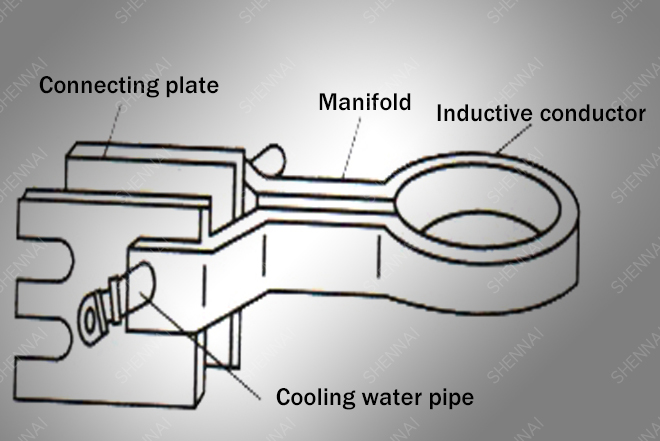- Tel:+8613007564317
- Email:[email protected]
FAQ
According to the skin effect, ring effect, proximity effect, sharp angle effect and other characteristics of the induced current, the shape of the quenching inductor must be compatible with the shape of the heated part in order to ensure the heating efficiency. Due to various parts
Different shapes, so the shapes and types of sensors used in actual production are also diverse. But generally speaking, quenching inductors usually include the following parts:

① Inductive (wire) coil is also called inductive conductor or effective coil. After the induction (wire) coil is energized, an alternating magnetic field is generated, causing eddy currents on the surface of the parts and heating the parts. Induction coil is the core part of inductor. The height of the inductor generally refers to the height of the induction (wire) coil.
② Manifold is also called manifold. The collector pipe inputs current to the inductive conductor.
③ Terminal block is also called terminal block or connecting board. The terminal block is used to connect the inductor with the transformer output head or the fastening part of the quenching machine tool. Water passes through and cools the induction coil.
④ The water supply device is used to cool the inductor itself and also for quenching and cooling of parts. Some water supply devices are integrated with the installation seat, and some water supply devices are separately welded with water pipes.
In addition, in some cases, the inductor is also equipped with a magnet, a magnetic shielding device, a positioning fixture and a strong device to prevent the deformation of the inductor.
We will get in touch with you as soon as possible
